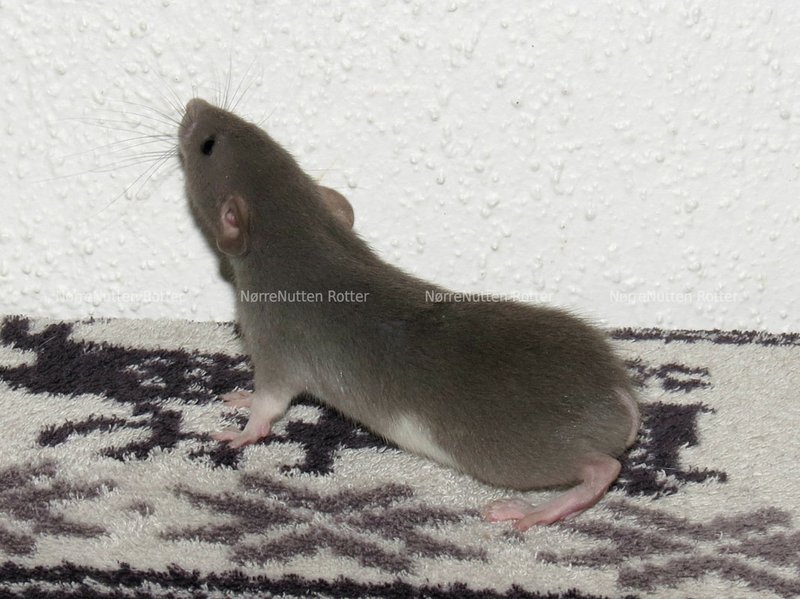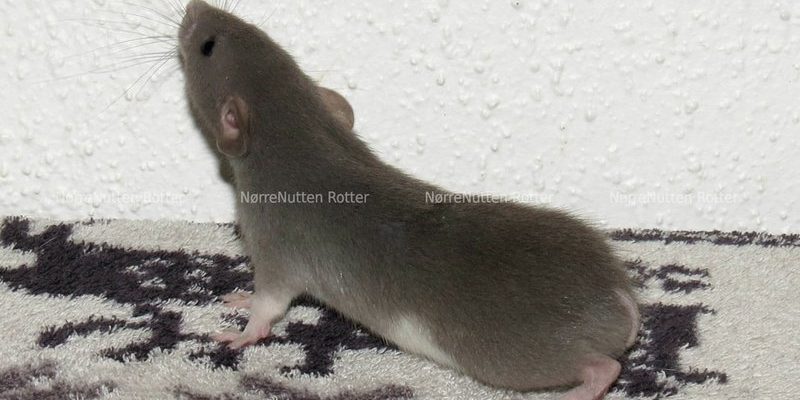
The Manx rat, a domesticated breed of the common brown rat, has captured the hearts of many pet lovers. With its unique traits and vibrant personality, it’s quickly becoming a favorite among small pet enthusiasts. So, let’s dive into the world of the Manx rat to explore its traits, appearance, and temperament, and discover why it might just be the ideal pet for you.
What Are Manx Rats?
Manx rats are a specific breed known for their distinct genetic trait—having a tailless or very short tail. This unique feature comes from a mutation that occurs in the *Rattus norvegicus* species. Unlike your average pet rat, these little guys stand out in a crowd, not just for their appearance but for their lively and engaging personalities.
You might wonder what it is that makes them special. It’s all in how they interact with their human companions. Manx rats are known to be extremely social, often displaying quirky behaviors and a desire to engage with those around them. Their friendly nature makes them excellent candidates for families or anyone looking for a delightful pet that offers companionship without the hefty commitments some larger animals require.
Physical Traits and Appearance
The first thing you’ll notice about the Manx rat is its *unique physique*. Given their taillessness or the presence of a very short tail, they have a rounded appearance, making them all the more endearing. Their bodies are well-proportioned and muscular, which is typical for domesticated rats, and their fur can come in various colors and patterns—from sleek black to soft beige, and even spotted patterns.
You might be thinking, “Do they have any special needs because of their physical traits?” Not really! Their lack of a tail doesn’t hinder their mobility, and they navigate their environments quite well. However, like all pets, they do need proper housing that allows them plenty of room to play and explore. A spacious cage stocked with climbing ropes, hammocks, and tunnels can mimic their natural instincts to burrow and scurry around.
Common Color Patterns
Just like your favorite candy, Manx rats come in a delightful variety of colors. Some common color patterns include:
- Black: Glossy and sleek, a classic choice.
- Gray: Soft and neutral, perfect for any home.
- Albino: Often white with red eyes, they really stand out.
- Agouti: A mix of colors giving them a wild look.
Each color pattern adds to their charm, and it’s likely you’ll find a shade that captures your heart!
Temperament and Behavior
Manx rats are known for their vibrant and engaging temperament. They’re naturally curious and love to explore their surroundings. You might find them energetically scurrying around their cage or engaging in playful interactions with their human companions. They thrive on socialization and can develop a strong bond with their owners, making them truly wonderful pets.
Think of a Manx rat like a tiny puppy. They’re energetic, love to play, and enjoy being around people. Their lively nature often leads to playful antics that can entertain anyone in the room. This personality trait means that spending time with them can feel less like a chore and more like a joyful experience.
Social Creatures
It’s important to remember that these little guys are social creatures. Without regular interaction, they can become bored or even stressed. You might want to consider adopting a pair to ensure they always have a friend around. Rats are known to groom each other and cuddle, which can bring a lot of warmth and connection into your home.
If you’re wondering how to keep a Manx rat happy, regular playtime and gentle handling are key. Providing them with toys that stimulate their minds and allow for physical activity can keep them entertained and engaged.
Care Requirements
Taking care of a Manx rat is a commitment, but it’s one filled with joy and companionship. Here are some essential care requirements you should know about:
- Housing: A spacious cage with levels to climb, soft bedding, and places to hide is essential.
- Diet: A balanced diet that includes commercial rat pellets, fresh fruits, and vegetables will keep them healthy.
- Socialization: Regular interaction with humans and other rats is crucial for their well-being.
Keeping their living space clean is also necessary. Regularly changing their bedding and providing fresh food and water helps prevent diseases and keeps your little friend happy. Let me explain: a clean environment is like a breath of fresh air for them!
Health Considerations
Like all pets, Manx rats can have health issues that potential owners should be aware of. Common health concerns include respiratory issues, tumors, and dental problems. Regular veterinary check-ups can help catch any issues early.
You might be wondering about how to keep them healthy at home. Providing a balanced diet, clean habitat, and plenty of enrichment activities can go a long way. For example, ensure they have chew toys to keep their teeth in check, as their teeth continuously grow.
Signs of a Healthy Manx Rat
A healthy Manx rat is often lively and curious. Here are some signs to watch for:
– Active Behavior: They should be keen to play and explore.
– Healthy Weight: Watch for obesity or significant weight loss.
– Bright Eyes: Clear eyes and a shiny coat are good indicators of health.
If you notice any changes in your rat’s behavior or appearance, it’s a good idea to consult a vet.
Why Choose a Manx Rat as a Pet?
Choosing a pet is a big decision, and a Manx rat might be the perfect fit for you if you’re looking for a companion that combines playfulness with affection. They require less space than larger pets and can thrive in smaller living environments. Plus, their endearing quirks can bring a lot of joy!
Honestly, they can be the ideal pet for first-time owners or families with kids, as they tend to be sociable and easy to handle. Just remember, bringing a Manx rat into your home means committing to their care, as they rely on you for their happiness and health.
Comparing to Other Small Pets
You might be asking yourself how Manx rats stack up against other small pets like hamsters or guinea pigs. Here are a few points to consider:
– Social Interaction: Manx rats are generally more interactive and social compared to hamsters, who may prefer solitude.
– Space Requirements: While guinea pigs need larger cages and more space, Manx rats can comfortably live in a well-sized rat cage.
– Lifespan: With good care, Manx rats can live 2-3 years, similar to hamsters, but can require more social interaction than some other small pets.
In the end, it really depends on what you’re looking for in a pet!
The Manx rat is a charming little creature with a lot to offer as a pet. From their unique appearance to their engaging personalities, these rats can bring joy and companionship into your life. They are social, fun, and relatively easy to care for, making them a delightful choice for both new pet owners and seasoned enthusiasts.
If you’re considering adding a Manx rat to your family, remember the importance of giving them attention and care, along with a clean, engaging environment. They thrive on love and interaction, and in return, they’ll offer you their quirky little selves and a heartwarming bond. So why not take the leap and explore the joys of having a Manx rat? You might just find your new best friend!

